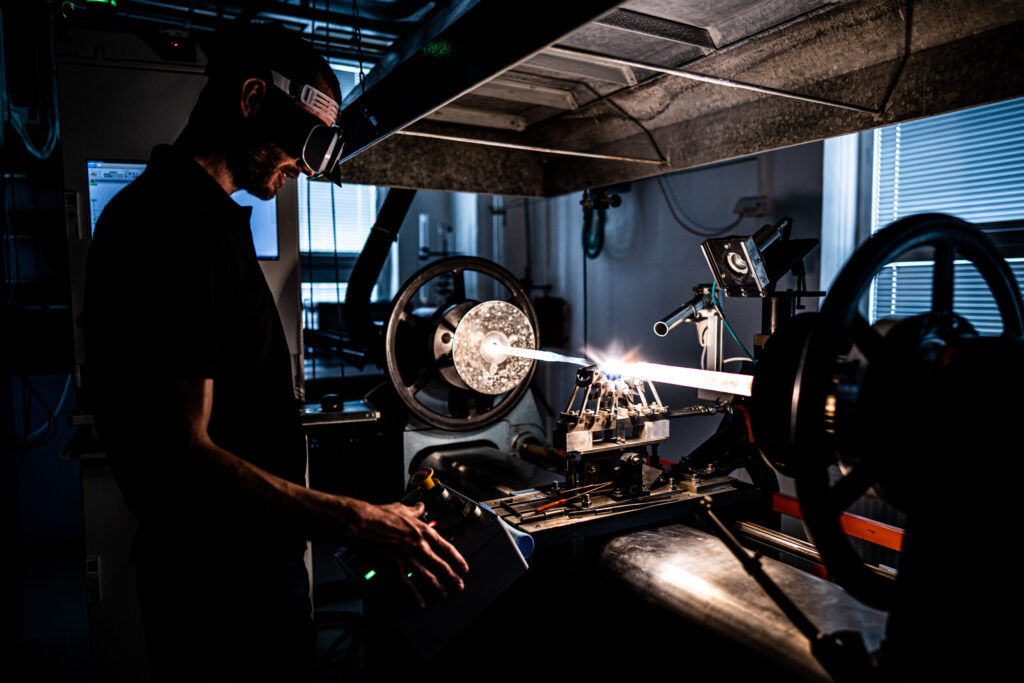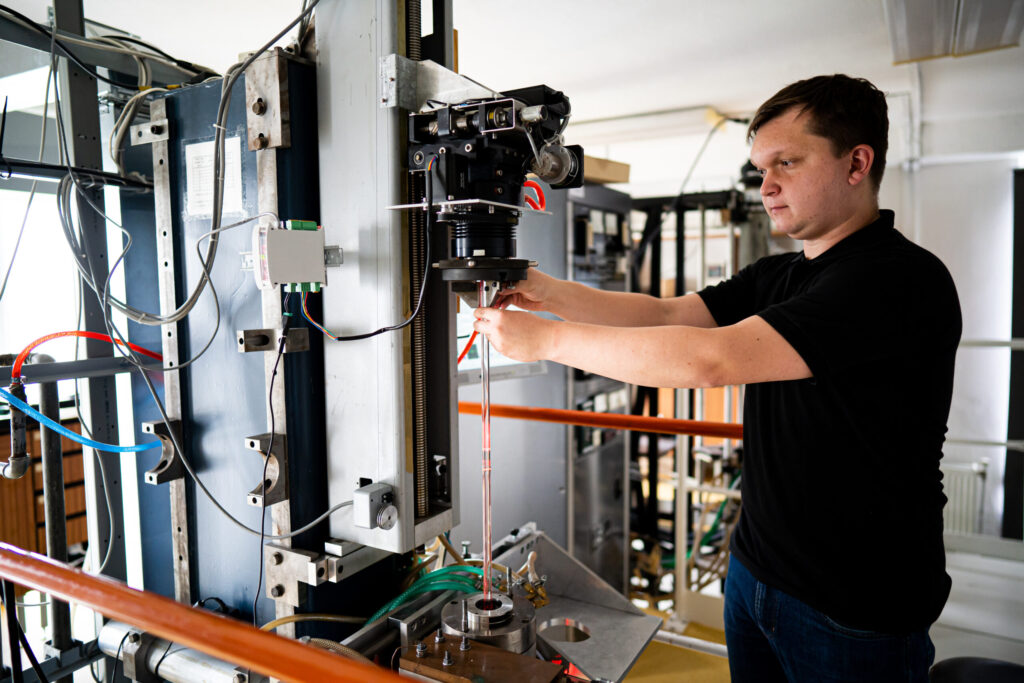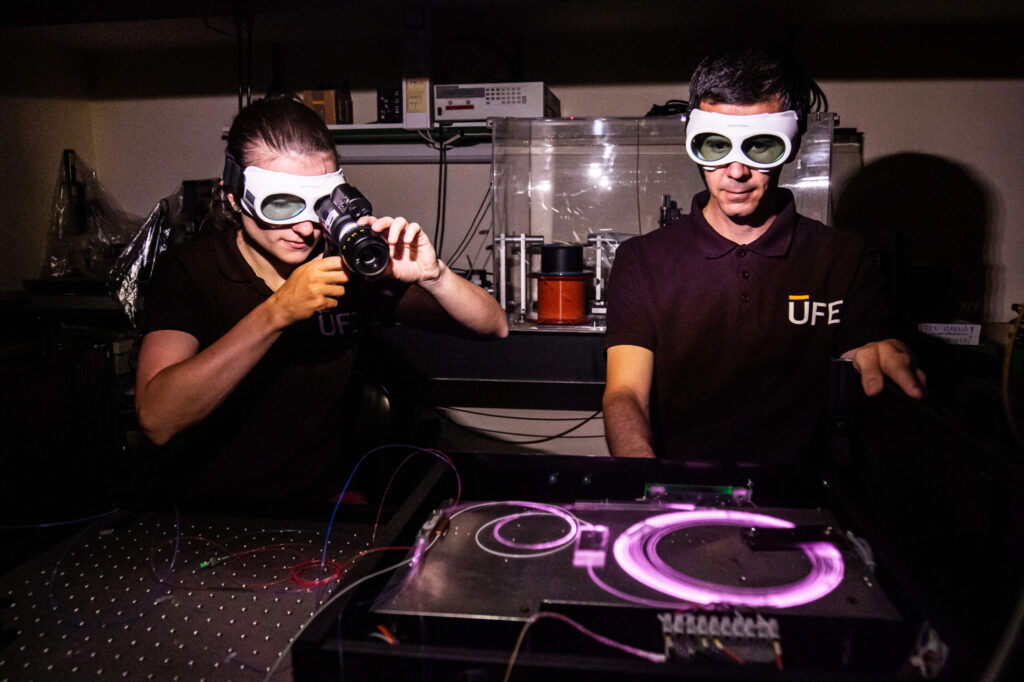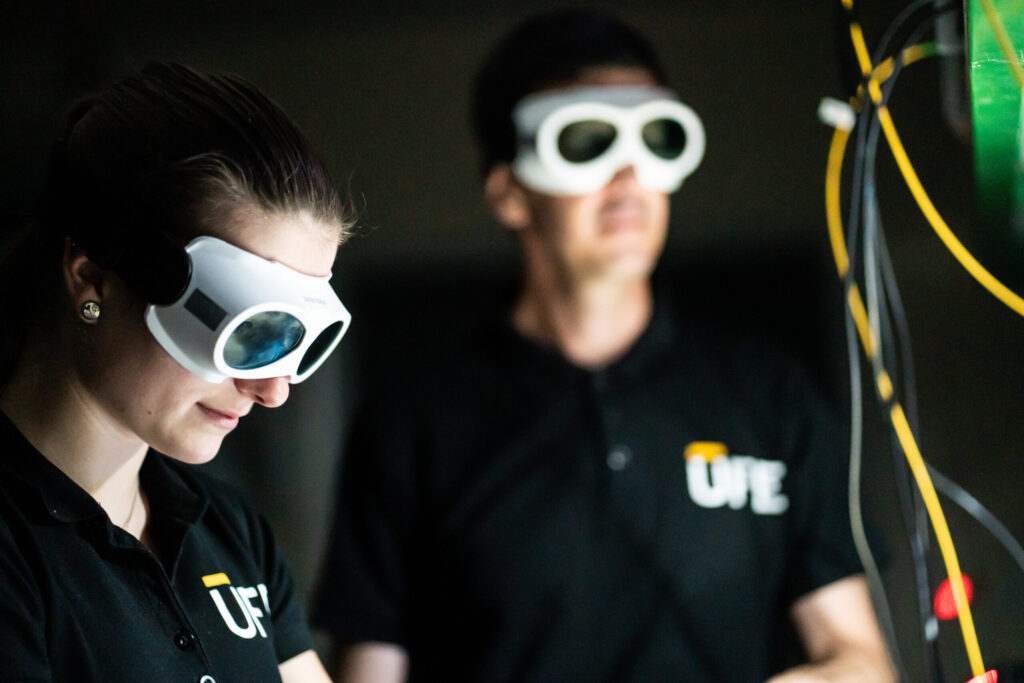At the forefront of laser technology, our team explores innovative solutions for the next generation of fibre lasers. With a focus on advanced doping techniques, preform stacking, and drawing technologies developed in-house, we push the limits of laser efficiency, maximum power, and maximum pulse energy achievable in fibre lasers and amplifiers.
Our Research Focus
Fibre Preforms and Drawing Technology
Our team is pioneering the preform doping from nanoparticle suspensions since 2007. Our technology allows to achieve higher doping concentrations and better uniformity than standard solution doping technology. With our advanced preform stacking technology, we can draw fibres with specialized geometries and properties tailored to meet the rigorous demands of high-power lasers.


Negative Curvature Hollow Core Fibres
We are exploring the potential of negative curvature hollow core fibres, which offer unique advantages in terms of low loss, low controllable nonlinearity and dispersion, high damage threshold and extended wavelength range. These fibres are key to developing new forms of ultrafast and high-power laser systems, with potential applications in both scientific research and industrial settings.
High-Power Fibre Lasers and Amplifiers
We are actively involved in the investigation of high-power fibre lasers and amplifiers, focusing on increasing the efficiency, pulse energy and average power output of fibre lasers and amplifiers. This research is pivotal in advancing fibre-based laser systems used in diverse applications, from materials processing to medical and defence applications.


Nonlinear Optical Crystal Poling
Our research also delves into the poling of nonlinear optical crystals, which is essential for the development of efficient frequency conversion devices. By tailoring the nonlinear properties of crystals, we enable efficient conversion of our laser sources to new wavelengths.
Transparent ceramics for future fibre lasers
Our research team is at the forefront of developing advanced transparent ceramics for use in high-power fibre lasers. We investigate a wide range of rare-earth (RE)-doped ceramic materials, including Y₂O₃, 2Al₂O₃-3SiO₂, YAG, and (Ho)₂B₂O₇, where A = Y, La, Yb, Lu, and B = Ti, Zr, or Hf.
These materials offer significant advantages over traditional glass-based fibres, such as higher thermal conductivity, better mechanical strength, higher emission cross-section, and the potential for higher doping concentrations of rare-earth ions. Our research focuses on optimizing the properties of these transparent ceramics to improve performance of future high-power lasers and applifiers. By pushing the limits of material science, we aim to enable more efficient and scalable laser systems with improved reliability and durability under extreme operating conditions.
